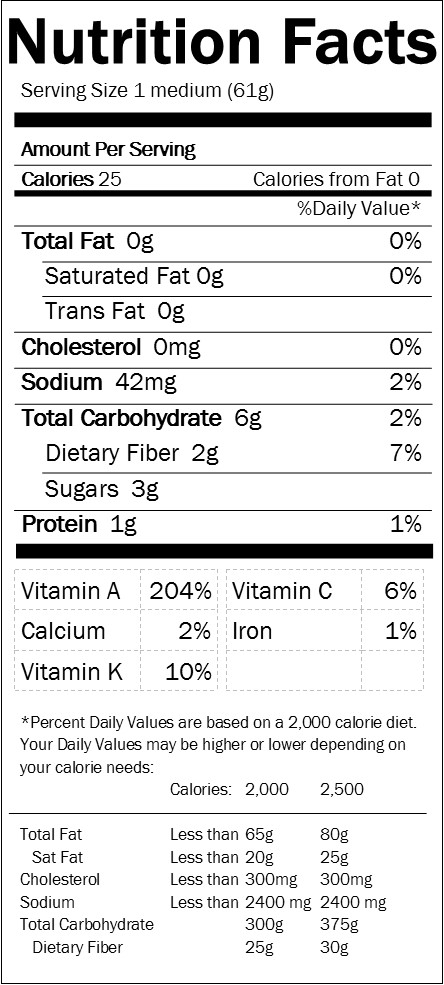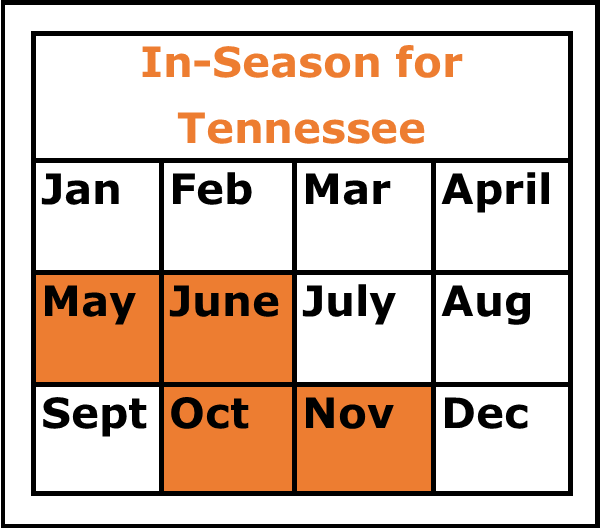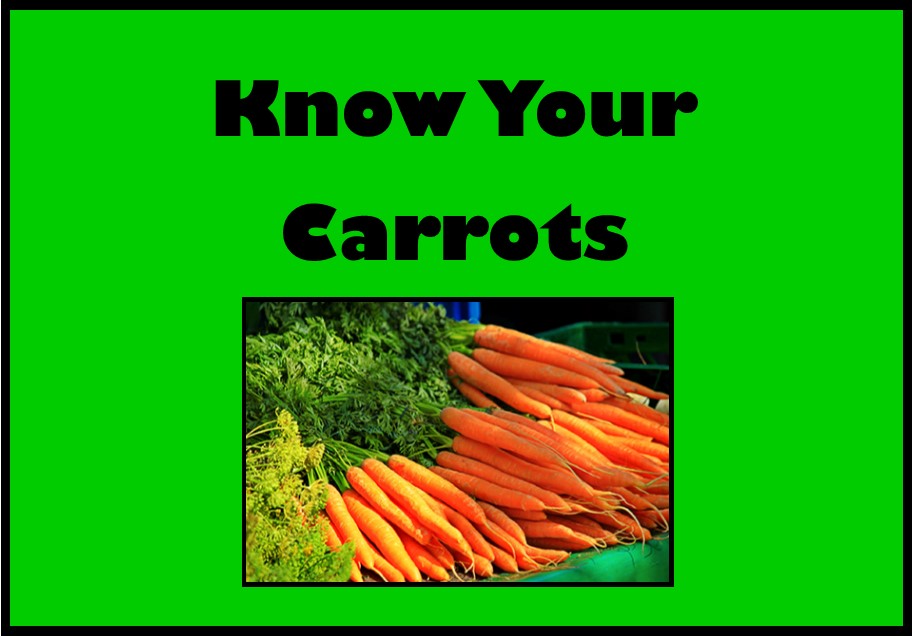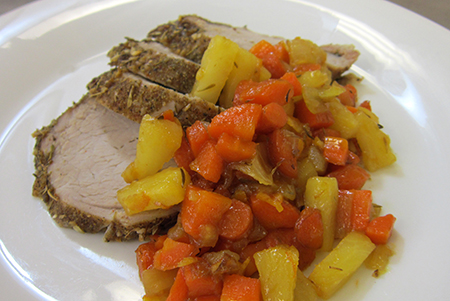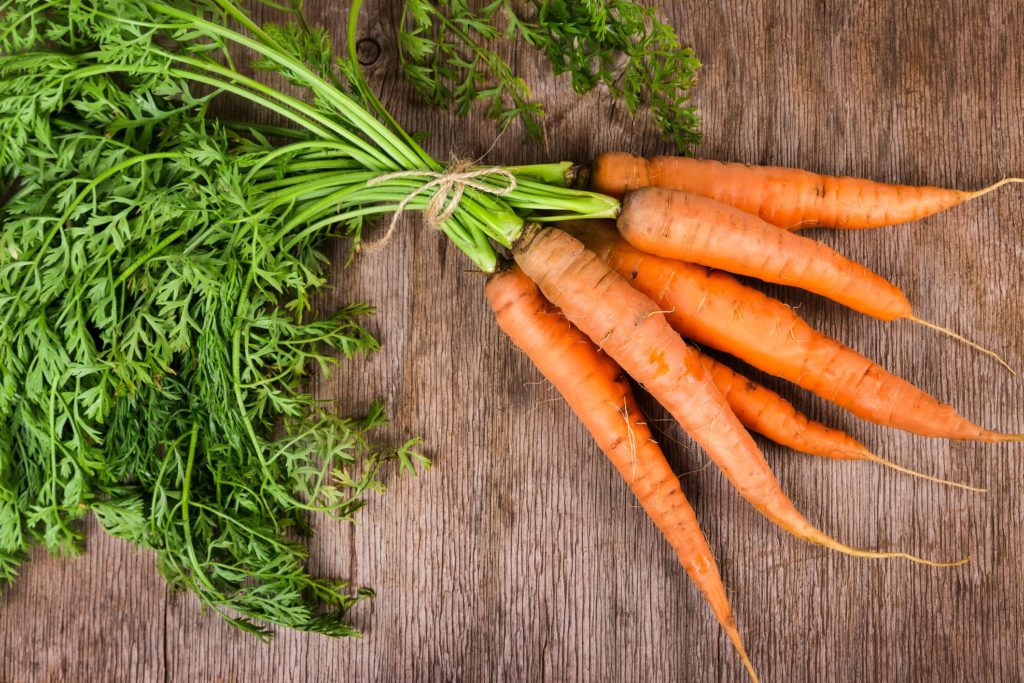
SELECTION
Look for firm, smooth carrots without cracks. They should not have green or whitening around the top or any sprouting. Larger carrots can be a little woody in the center core while baby carrots are more tender but less sweet. Baby carrots in the grocery stores in bags are usually just mature carrots that have been cut down. Look for true baby carrots at the markets in the spring.
STORAGE
Carrots like a cold (right around 32 degrees F) and humid (95%) environment, which is colder and more humid than a typical refrigerator. However, most carrots will last several weeks in the refrigerator, if stored correctly. Do not wash the carrots, simply brush off any excess soil. Cut the tops off as they will sap the moisture and nutrients from the carrot. Place in a plastic bag with some holes punched for ventilation. A very slightly dampened paper towel in the bottom of the vegetable bin will add some humidity. Do not store with fruits as these give off a gas that will cause a bitter flavor and early spoilage.
If you are going to use your carrots within a week, wash and submerge them in a container of water, stored in the refrigerator, with the water changed daily.
Limp carrots can be used in cooking as long as there isn’t any other spoilage signs. Limp carrots can also be remedied by soaking them in ice water. If carrots get a whitish look on the outside, they are dried out. You can moisten them by soaking and use.
The carrot greens wilt very quickly so try to use the same day or store in refrigerator, loosely wrapped in a slightly damp paper towel for a day or two.
PREPARATION
Wash carrots well. Most of the nutrients are in the skin so leave the skin on or peel just the outside layer, if really dirty or tough. Cut off the top and tip of the root. If the carrots are very large and seem to have a tougher core, cut lengthwise and trim it out.
EDIBLE PARTS
The main edible part of the carrot is the root. However, the green tops can be used as well. They are good in soups and as a broth flavoring or snipped into salads or as a garnish. Carrots can be eaten raw or cooked.
HOW TO TRY
Make a vegetable tray with a dip like ranch dressing or pack cut up carrots in a plastic zip top bag for a snack.
Grate or shave carrots as the base of a salad with added fruits, especially citrus or pineapple, and/or nuts and a mayonnaise or vinaigrette dressing.
Add grated carrots to orange gelatin with pineapple and nuts for a unique salad.
Make a mirepoix, which is typically a mixture of 50% chopped onion, 25% chopped carrot and 25% chopped celery. Mirepoix is used in making stock and is the basis of many soups, sauces and stews.
Sauté carrots for a side dish, glazed with orange juice, maple syrup, honey or brown sugar.
Roast carrots with a little olive oil and salt or dress them up with maple syrup and bacon.
Boil carrots and mash for a delicious puree or soufflé.
Add grated carrots to baked goods, such as muffins, cupcakes, quick breads and cakes.
VARIETIES
Carrots are not just orange. Look for Rainbow Carrots which come in a variety of colors like yellow, white, red and purple. These heirloom carrots are often sweeter than orange carrots.
Cooking Techniques
- Boiling
- Steaming
- Braising
- Sautéing
- Stir-Frying
- Roasting
Flavor Pairings
- Citrus
- Maple
- Honey
- Nutmeg
- Cumin
- Ginger
Recipes
- Spring Chicken Noodle Soup
- Beef Stew
- Ginger Glazed Grilled Carrot Salad
- Carrot Salad
- Sunset Congealed Salad
- Zucchini, Carrots and Basil
- Carrots, Shallots and Spinach with Citrus Brown Butter
- Browned Butter Carrots
- Carrot Soufflé
- Roasted Pork Tenderloin with Sweet Carrot Chutney
- Buttermilk Pot Roast
- Pork Stir Fry with Turnips and Carrots
- Kung Pao Chicken with Vegetables
- Vegetable Stir Fry with Rice Noodles
- Hoisin Chicken Lettuce Wraps
- Fettuccine Primavera
- Carrot Cake Cupcakes
